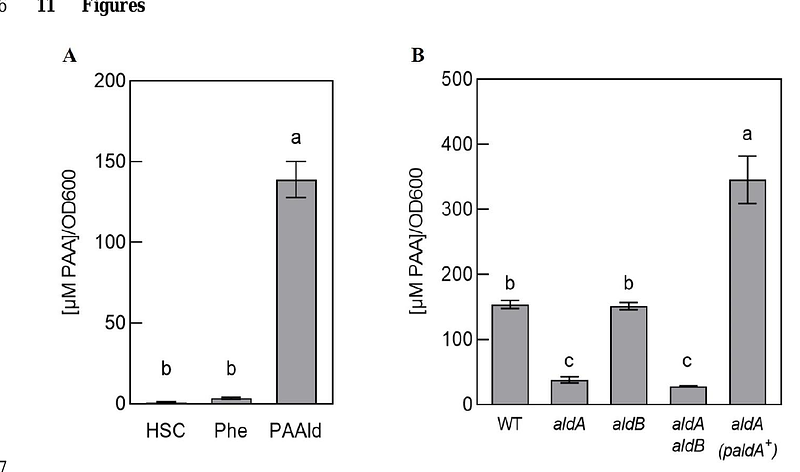Investigating the biosynthesis and roles of the auxin phenylacetic acid during Pseudomonas syringae-Arabidopsis thaliana pathogenesis

Investigating the biosynthesis and roles of the auxin phenylacetic acid during Pseudomonas syringae-Arabidopsis thaliana pathogenesis
Lee, C.-Y.; Harper, C. P.; Lee, S. G.; Qi, Y.; Clay, T.; Aoi, Y.; Jez, J. M.; Kasahara, H.; Blodgett, J. A. V.; Kunkel, B. N.
AbstractSeveral plant-associated microbes synthesize the auxinic plant growth regulator phenylacetic acid (PAA) in culture; however, the role of PAA in plant-pathogen interactions is not well understood. In this study, we investigate the role of PAA during interactions between the phytopathogenic bacterium Pseudomonas syringae strain PtoDC3000 (PtoDC3000) and the model plant host, Arabidopsis thaliana. Previous work demonstrated that indole-3-acetaldehyde dehydrogenase A (AldA) of PtoDC3000 converts indole-3-acetaldehyde (IAAld) to the auxin indole-3-acetic acid (IAA). Here, we further demonstrate the biochemical versatility of AldA, as it can use both IAAld and phenylacetaldehyde as substrates to produce IAA and PAA, respectively. We also show that during infection AldA-dependent synthesis of either IAA or PAA by PtoDC3000 does not contribute significantly to the increase in auxin levels in A. thaliana leaves. Using available arogenate dehydratase (adt) mutant lines of A. thaliana compromised for PAA synthesis, we observed that a reduction in PAA-Asp and PAA-Glu is correlated with elevated levels of IAA and increased susceptibility. These results provide evidence that PAA/IAA homeostasis in A. thaliana influences the outcome of plant-microbial interactions.